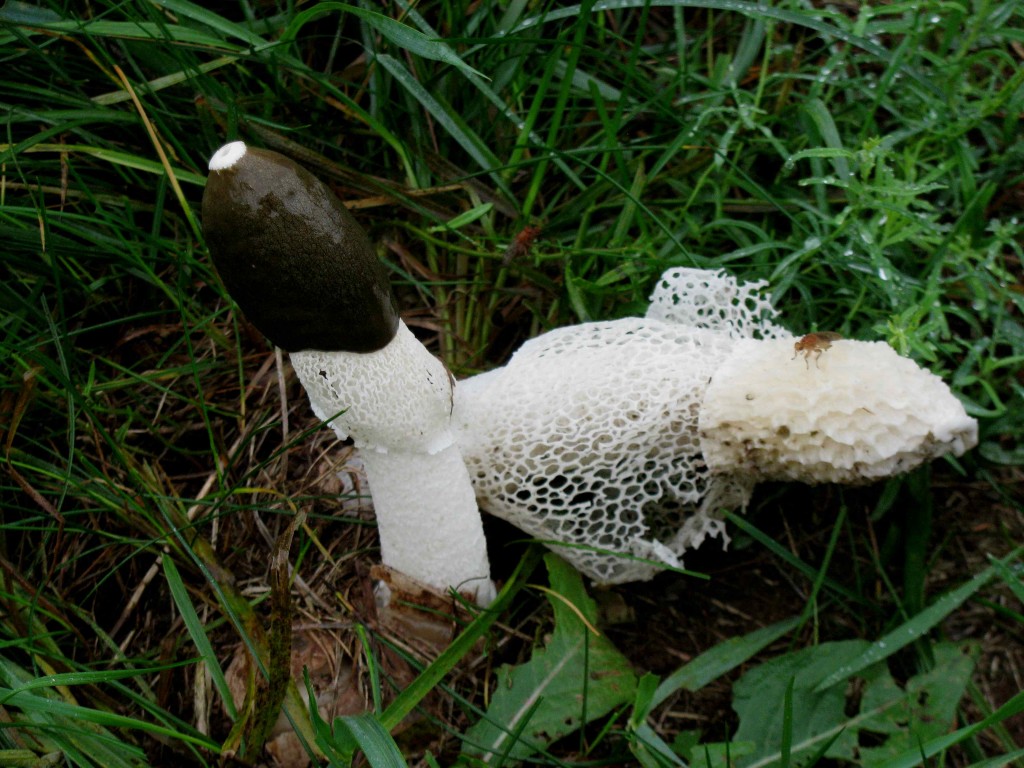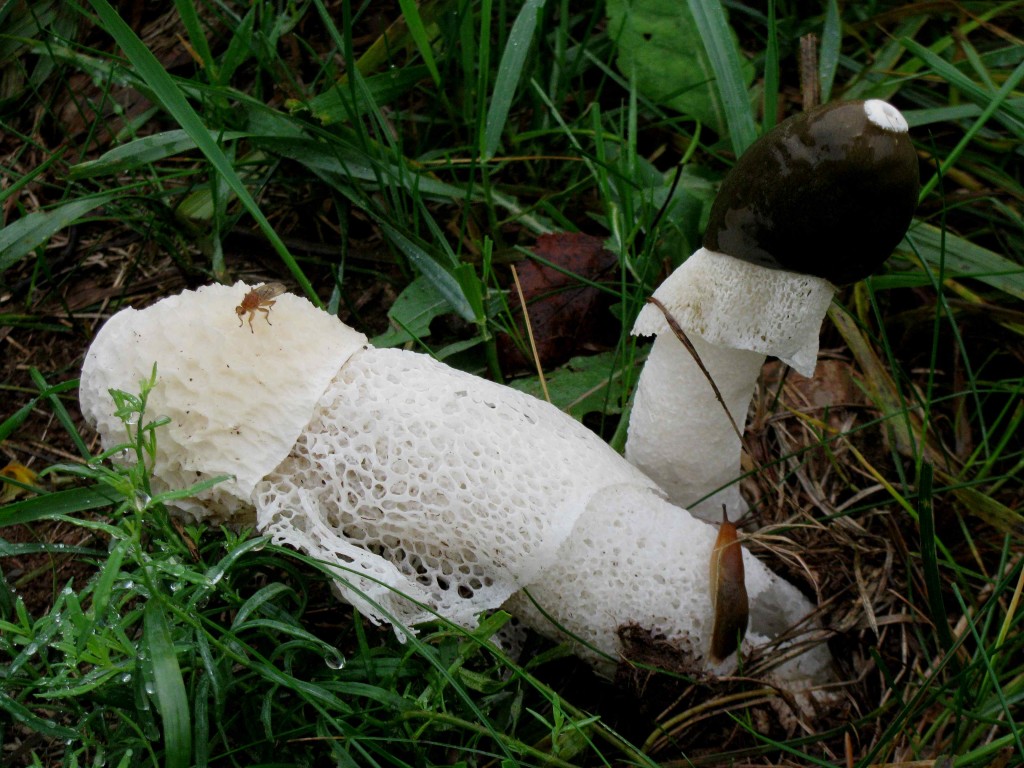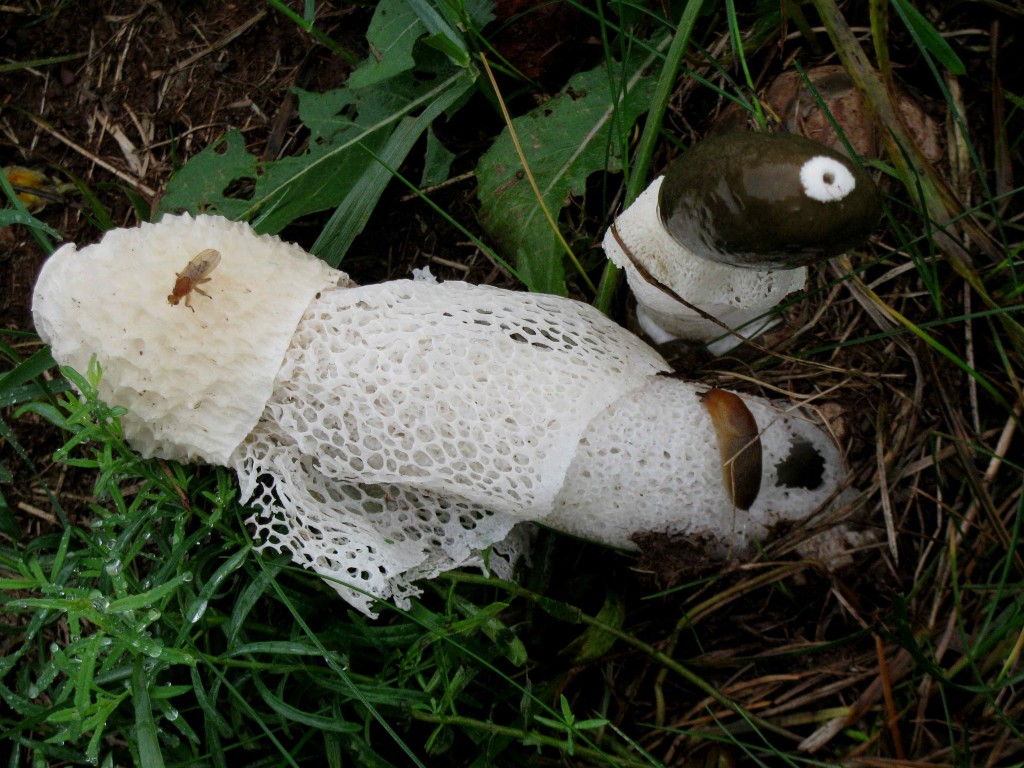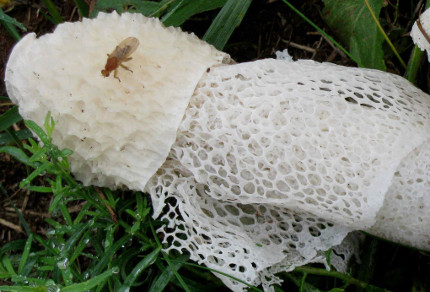
Skirted (Netted) Stinkhorn, Dictyophora duplicata (© Magi Nams)
Like a damp shroud, fog and drizzle obscured clear views of autumn-tinted trees this morning. A duck in flight was a silent, winged torpedo, its body a blurred silhouette smeared by mist. A flock of a half dozen starlings flew in disjointed semi-unison, their wings whipping against moist, thick air – the warm exhaust of Hurricane Ophelia, which dumped treacherous rain onto Nova Scotia yesterday.
Seizing on the mild, 15 C° morning, I headed to my gardens to pull up beets and carrots and dig potatoes, and in doing so, discovered a pair of intriguing mushrooms growing at the grassy edge of my salad garden, near an old tree stump. Both possessed beautiful, netlike skirts below phallic caps. The younger of the two was particularly striking, its lacy, white skirt presenting a marked contrast to its slimy, olive-brown phallic head. The older mushroom had fallen over, its skirt ripped. Flies lit on its white, cratered cap, and a slug mucus-footed its way over the mushroom’s thick stalk.

Skirted (Netted) Stinkhorns, Dictyophora duplicata (© Magi Nams)
During a break from my harvesting efforts, I flipped through a mushroom field guide, identifying the mushrooms as stinkhorns, and then scanned internet photos to confirm my identification of the species as Dictyophora duplicata, the skirted or netted stinkhorn. All stinkhorns belong to the mushroom group Gastromycetes, which also includes puffballs, earthstars, and the delightful-looking bird’s nests, which resemble tiny nests with eggs or shallow cups filled with pebbles.1
All gastromycete mushrooms enclose their spores within a fruiting body; hence the ‘gastro’ or stomach part of the group name. In the case of stinkhorns, the fruiting stalk develops to maturity within an ‘egg’ of tough tissue that protrudes up through the soil surface. When mature, the stalk rapidly elongates, rupturing the ‘egg’ and pushing up into the air. This elongation may take up to three hours or occur as quickly as within thirty minutes.1 So, the slimy-topped stinkhorn I observed undoubtedly ruptured its protective ‘egg’ within a few hours of when I set out to my gardens this morning.
The olive-green, slimy coating covering a newly-erupted skirted stinkhorn fruiting stalk is composed of spore-producing basidia and mature basidiospores. Stinkhorns received their appellation from the fetid scent they produce, which attracts insects to the fruiting stalk. When flies, such as I observed, and other insects walk around on a stinkhorn’s fruiting stalk, they pick up sticky basidiospores on their feet, and on flying elsewhere, disperse the spores to new sites.1 I caught whiffs of the stinkhorn stink, but didn’t find it overpowering, as the field guide suggested it may well be for some stinkhorns.1 Never having stumbled upon skirted stinkhorns before, I intend to keep an eye on these. (Note the brown, circular mass with a ‘crinkled-paper’ surface in the upper right corner of the photo below, just above the fruiting stalk with the olive-brown cap. That, I believe, is an ‘egg.’)

Skirted (Netted) Stinkhorns, Dictyophora duplicata (© Magi Nams)
Reference:
1. Orson K. Miller, Jr. Mushrooms of North America. E.P. Dutton, New York. Gasromycetes, pp. 289-316.


